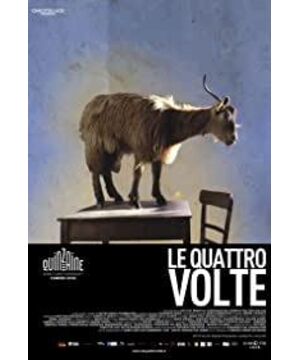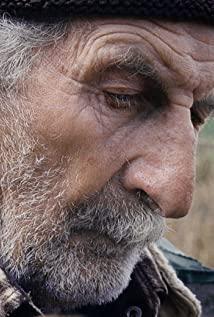After watching the whole film, you can understand why the movie is called "Four Times". These two words are obvious reminders, and there is definitely a suspicion of "revealing key plots". If the title appeared at the end, that kind of epiphany would have come too slowly. Only when it appeared at the beginning can the viewer walk towards the end with a sense of relief that gradually escaped the predicament, and gradually experience the oppression of fate. It's hard not to be in awe of what appears to be a "God's point of view" film.
It's definitely a movie about reincarnation, if I say it.
The old shepherd lived the most ordinary and peaceful life day after day. If the sheep hadn't run out of the sheepfold and a few gathered in front of the old man's bed, the villagers would not have found that the old man had died in their own home. The old man took good care of the sheep during his lifetime, and after his death he was reborn as a little lamb. The little lamb came to the ground all at once from the womb of the ewe, and it struggled to adapt (or re-adapt) to life on the ground. One day after that, the little lamb lost his way in the woods and finally died under a tree, his body buried under heavy snow. Next, when winter comes to spring, people cut down a tree and put it in the center of the village as a celebration ceremony for some kind of festival. The festival brought unprecedented joy to the people. After the festival, people cut down the trees, transported them outside the village, and burned them together with other trees to make black charcoal. At the end of the film, the truck pulls the charcoal back to the village, and the man in the truck distributes the charcoal to each household. The four different life experiences presented in the film are exactly the four stories of the same soul in different life forms.
I personally especially like three details in the movie. The first detail is the ant that appears twice. The ants in the movie seem to be equivalent to some kind of signal, or messenger, and both appearances bring considerable turning points to the transition between the two life forms. The ants first appeared on the face of the old man, crawling from the forehead to the nose of the old man, and then to the brow of the old man. Then the old man got up and left, and the camera was aimed at a group of ants who were preparing to remove the old man's "medicine". The old man was about to come to the end of his life, and this was the last time he would sit on the grass he knew and shepherd sheep. That night, the old man's life came to an end, and the first reincarnation was coming. The second time the ants appeared was on the trunk of the tree where the dead lamb was snuggling, and the ants were crawling from top to bottom. This time, life moved from motion to stillness, from the life that was originally attached to humans and animals to the life that was attached to plants.
The second detail is incineration. After the old man died, the villagers treated the old man's body by cremation, and the first reincarnation really began. In the third story, the trees are about to be transformed into charcoal, and the transformation can be accomplished by burning them with fire. In the first cremation, there is a shot that looks out from the inside where the old man is lying, the door is slammed shut, and the picture changes from bright to dark. There is also a shot of the second burning that looks out from the stacked wood. You can see that the front is gradually blocked by the wood that has just been put up, and the picture changes from bright to dark again. The connection between the two different life forms can also be seen from the two incinerations before and after.
The third detail is reincarnation. The reincarnation mentioned here is not just the reincarnation of the four lives, but also the circular structure formed by the connection between the beginning and the end of the movie. The two burnings are also the key point of the plot. The first burning symbolizes the beginning of reincarnation, but the second burning does not symbolize the end of reincarnation. On the contrary, reincarnation seems to never end. Starting from the second incineration, with the truck being transported back to the village, that soul is also returned to the homeland, and the story begins again, which can also be regarded as returning to the beginning. Either way, the entire film's head and tail are officially connected in an unassailable circle.
Interestingly, the director's attitude towards religion seems vague. The old man believed in the fact that the ashes in the church could cure diseases at first, until one day he found that his condition was not getting better and wanted to go to the church to seek answers, but the door of the church was not open to him. Afterwards, a bag of incense ash was abandoned on the grass by the old man, and the incense ash was then removed by the ants, and the old man died quietly that night. This seems to imply the disintegration of faith. The old man's body was discovered because a man disguised as a devout Christian accidentally pulled the car, ran the car into the sheepfold, and the sheep escaped. However, at the same time as these events, the street There is a line up for some kind of religious ceremony. After the old man's body was found, the priest presided over a simple funeral for him. Are these events deliberately arranged by the director? (I know too little about religion, please forgive me if I misunderstand.)
The last scene at the end of the film is almost exactly the same as the scene used by the old man for the first time returning from church. Perhaps the director is implying that what he thinks of reincarnation is just constant reincarnation. Departure and return in the end.
amateur level jokes
View more about Le Quattro Volte reviews








